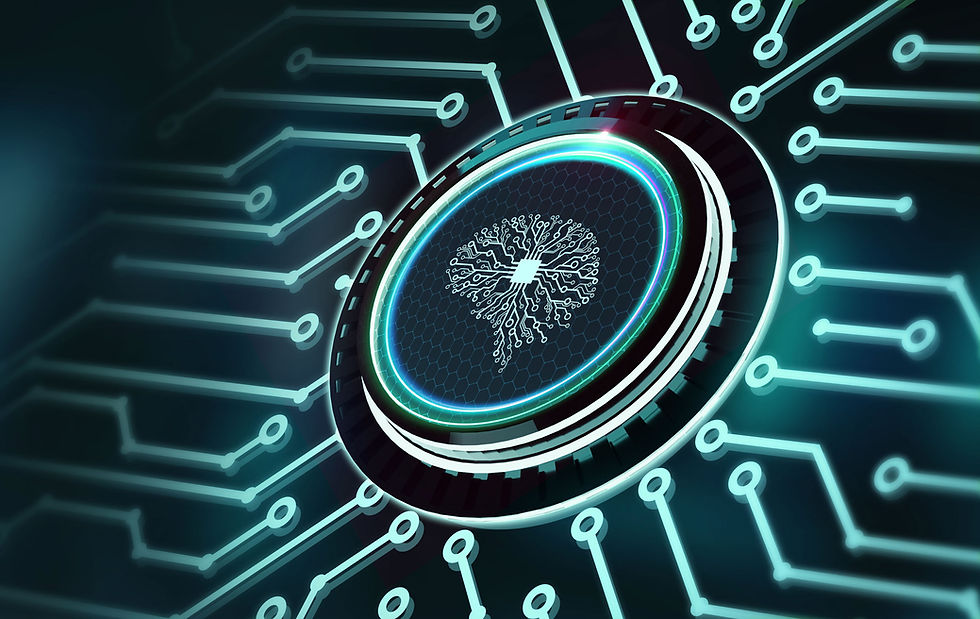Why Expertise is the Ultimate Firewall: Cybersecurity Insights with Jairo Pantoja-Moncayo
- Juan Allan
- Jul 17
- 4 min read
Jairo Pantoja-Moncayo on cybersecurity's critical talent shortage. Expert insights on proactive defense, human-AI fusion, compliance, and turning security into business value

Critical cybersecurity vulnerability plaguing organizations isn't just sophisticated malware, but a profound global talent shortage. Jairo Pantoja-Moncayo, a seasoned cybersecurity expert, argues that even the best tools falter without the human expertise to wield them proactively.
In this interview, he dissects this crisis and outlines how blending cutting-edge tech with irreplaceable human skill is the only viable defense against today's escalating threats. He'll detail strategies for detection, response, compliance, and crucially, transforming cybersecurity from a cost center into a business enabler with demonstrable ROI.
What are the biggest cybersecurity threats facing organizations today?
I would sum it up as the shortage of specialized talent able to monitor proactively and stop a threat before it materializes. In the worst‑case scenario—when an attack is already under way—the same lack of seasoned professionals makes it hard to mitigate, neutralize, and recover the business.
Having “the world’s best cyber‑tool” is not enough; you also need humans who can understand, interpret, and analyze the full threat landscape. Artificial intelligence is indispensable, but expertise is irreplaceable—just as airlines still need human pilots despite advanced automation and AI. The (ISC) 2024 Workforce Study estimates a global gap of 4 million cybersecurity professionals, with U.S. demand outpacing supply by roughly 500,000 positions.
How do you approach incident detection and response?
In my opinion, the recommended approach is a fusion of cutting‑edge security technology and highly skilled human analysts who can interpret what the tools produce. In other words, leverage the best of both worlds to mount an adequate defense against today’s threat landscape.
What tools or frameworks are currently part of your cybersecurity strategy?
Risk Analysis is fundamental, along with attack‑surface vulnerability testing, ethical hacking, incident‑response plans, incident‑classification matrices, and assessments such as CIS Controls v8.1, the NIST Cybersecurity Framework, and NIS2 Directive readiness.
Each is tailored to the organization in line with cybersecurity best practices. MITRE ATT&CK for threat‑informed defense and use ISO 27005 for risk management where relevant as well.
How do you ensure compliance with industry standards (e.g., NIST, ISO 27001)?
By implementing security controls across people, processes, and technology—prioritized by asset criticality—and generating an action plan that both mitigates risk and satisfies regulatory requirements such as NIST, PCI DSS, ISO 27001, HIPAA, GLBA, and others. Continuous‑control monitoring and third‑party audits provide the evidence base auditors now expect.
What role does employee training play in your cybersecurity program?
People are a foundational part of organizational security. Controls aimed at people—training, drills, and awareness—should turn the “weakest link” into a first line of defense that protects both the company and them. Also, regular phishing simulations with effective learning modules can drop click‑rates.
What are the main drivers of cybersecurity investment in the U.S. market?
Managed Detection & Response (MDR), 24/7 SOC services, next‑gen firewalls, corporate EPP, advisory services, and professional services top the list.
What challenges do companies face when scaling cybersecurity operations in the U.S.?
Chiefly the scarcity of specialized talent. For example, only about 1 in 10,000 U.S. companies can afford a full‑time CISO, let alone threat hunters and analysts covering three shifts for 24/7 security.
How do budget constraints affect cybersecurity priorities for U.S. businesses?
In my opinion, if companies treat cybersecurity as a cost instead of a business enabler, budget friction will persist. Our task as cybersecurity specialists is to show executives that cybersecurity is an investment with high ROI: customers trust a secure enterprise to handle their data with care, opening new revenue and partnership opportunities.
Are there specific industries in the U.S. where cybersecurity demand is growing fastest?
For me, is at all levels. Demand is rising across the board, but recent Sophos State of Ransomware 2025 data show especially strong growth in government, private sector, critical infrastructure, universities, and education at large.
Additional sectors on the rise: manufacturing, healthcare, and financial services, each facing a surge in ransomware and supply‑chain attacks and now they urgently need cybersecurity.
How do evolving regulations (like CCPA) influence cybersecurity strategies in the U.S.?
In sum, these types of regulations push organizations out of their comfort zones. Having an antivirus, a firewall, or even a CISO does not equal full protection. Regulations force companies to see how cybersecurity fuels the business, to connect security with risk management and resilience, and to focus not only on risk mitigation but also on regulatory compliance.
Ultimately, CISOs need to “win before the game starts” by aligning security with business objectives. The goal is to protect the business processes that generate revenue and value, not just the computers. Once you understand the business, you can foresee what might go wrong, that’s risk management.
It’s complex: operating in a digital ecosystem means risks extend well beyond organizational boundaries. Knowing the risks isn’t enough; you need a strategy that prioritizes, resources, and aligns across the enterprise. Certifications help CISOs and the wider company build trust and unlock new markets.
Next comes technology: tools must block 99.999 % of attacks with no human touch, while the remaining 0.001 % requires the right people and tools to defend the organization. Threat detection and response are vital but only work if the foundational controls are solid. That is the true job of a CISO.



Comments